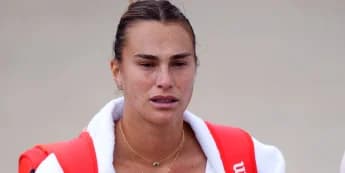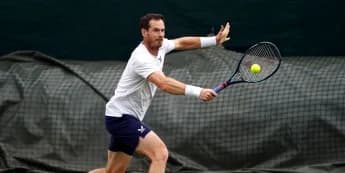In the realm of tennis, the debate over fairness in doping suspensions intensifies as Simona Halep questions the inconsistent treatment of players, spotlighting the urgent need for a transparent and equitable anti-doping system.
In the realm of professional tennis, few issues provoke as much debate as doping suspensions and the perceived inconsistencies surrounding their enforcement. Simona Halep, a former world number one and multiple Grand Slam champion, has recently ignited controversy by questioning the differing outcomes of the doping cases involving herself and Iga Świątek. Halep, who endured an extended suspension along with a severe ban following two distinct anti-doping violations, now finds herself in conflict with the quick resolution of Świątek’s situation, highlighting a possible discrepancy in how the sport’s governing bodies handle anti-doping infractions.
Halep's ordeal began in October 2022 when she was provisionally suspended after testing positive for the prohibited substance roxadustat. Despite firmly denying any intentional misconduct, Halep received a four-year suspension in September 2023, which was later reduced to nine months after she appealed to the Court of Arbitration for Sport. The Romanian tennis player argued that the presence of the substance in her body resulted from contamination from a registered supplement, a claim she asserts was not given proper consideration. Nevertheless, the contrast between Halep's situation and Świątek's recent one-month suspension has caused the former world number one to question the equity of the proceedings.
Świątek's positive test for trimetazidine (TMZ) in August 2023 resulted in a significantly milder outcome. The International Tennis Integrity Agency (ITIA) determined that Świątek's failure was caused by contamination in her melatonin medication, leading to a mere one-month suspension, which has ignited further discussion. Halep, who fought her case for more than 18 months, voiced her frustration publicly, saying on Instagram, “I find myself questioning why there is such a large disparity in the treatment and judgment received. I cannot find a logical explanation. It must be due to ill will from the ITIA.”
Compounding this issue is the contentious situation involving Jannik Sinner, who was exonerated following two positive drug tests earlier this year. The Italian's defense—that the prohibited substance clostebol entered his system through massages and sports therapy sessions with his team—was upheld by an independent tribunal. However, the World Anti-Doping Agency (WADA) is currently challenging this verdict. The differing results in Sinner's case, along with the Halep-Swiatk saga, have sparked significant criticism regarding the manner in which the sport manages doping violations.
Tennis players, especially those competing on the men's and women's tours, have expressed worry regarding what they see as double standards in the way the system treats different athletes, influenced by their rankings and status. Karen Moorhouse, the chief executive of the ITIA, addressed these rising concerns in a media briefing, highlighting that the cases in question involved unintentional doping violations instead of deliberate cheating. She assured the public that the governing body was committed to transparency and maintaining the integrity of tennis, despite the noticeable inconsistencies that continue to tarnish the reputation of the sport’s anti-doping policies.
According to the Professional Tennis Players Association (PTPA), the sport requires a reformed anti-doping system that emphasizes transparency, consistency, and fairness. All players, irrespective of their rankings or available resources, should receive equal treatment and respect under the law. The ongoing struggle for a fairer system brings to light the broader issue of governance within tennis, which is likely to change as more notable cases emerge. In the meantime, athletes like Halep and Świątek will continue to be central figures in this discussion, representing the significant divides in how tennis maintains its integrity.







